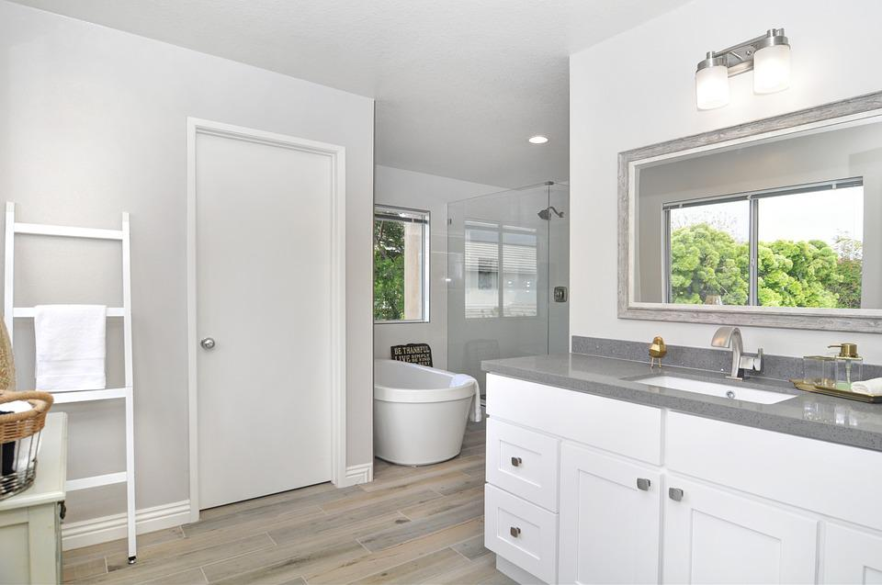With the current inflation rate and ever-changing economic situation, it isn’t easy to decide where to invest for some form of financial stability. One of the safest and most lucrative investment opportunities out there is real estate. You can rent a place out, resell it, or flip it.
House flipping refers to the process where you buy a distressed property, renovate it, and resell it for a net profit. Those who flip houses benefit from the lack of substantial capital and equipment needed. This requires no special training or licenses either. If you want to learn more about how to flip a house effectively, then keep reading.
What to Look for When Buying a Property to Flip
Finding the right property and maintaining a return on investment ratio can be challenging, especially if you’re just stepping into the world of house flipping. Here are a few things you should take into account when property hunting:
1. Location
The location is the first consideration of potential buyers. You need to check the neighboring houses, the crime rate, nearby schools, shops, and parks to ensure that the flipped house sells for a decent profit later on.
2. Assess the Extent of Remodeling
You need to keep an expense cap when embarking on renovations: you should be spending less than the difference between the house’s cost and the average value of neighboring houses. According to the 70% rule, you should not spend more than 70% of the home’s after-repair value, minus the renovation cost. This ensures that you retain a profit margin once you’ve flipped the property.
Before purchasing, assess the property to know precisely how much work is required and whether it fits your budget. Start from the roof and make your way down. If the return on investment is limited, keep looking for other properties that are in better condition.
3. Check the Heating and Electricity.
The property should ideally have a newer heating and electric system, as old wires and electrical components can bring the resale price down and even be considered potentially dangerous. If the house requires complete rewiring and a new central heating system, it will considerably raise the cost of remodeling. Always do a thorough cost-benefit analysis and try to find properties with basic functional infrastructure.
How to Renovate to Increase Value
Once you’ve purchased the property, you will have to carry out necessary renovations to increase the property’s value. Here are a few ways in which you can achieve this:
Update the Kitchen and Bathroom
Kitchens and bathrooms are the first places buyers look at, as their functionality and design can reveal the age of the house. They can also act as the house’s selling point if they are appropriately updated.
For the kitchen, evaluate the floor plan to determine how you want to change the layout, whether you want an island kitchen or a galley layout. Then, replace the existing cabinets and fixtures if they feel shabby. Adding a kitchen island can help to optimize your kitchen space with more storage space. Add a new countertop to make the place appear high-end; depending on your budget, you have multiple materials to choose from, like granite or quartz. Add good lighting, such as pendant lights, to take the look of the kitchen to a whole new level.
For the bathrooms, the old sinks and toilets will have to go. Instead, add new, water-efficient, and compact models to make them function optimally and look spacious. Having separate his-and-hers sinks can give a more luxurious feel to the master bathroom. Similarly, neutral tones and a nice tub can give it a relaxing, spa-like feel. Change its tiles, and experiment with different materials such as glass, stone, and porcelain to elevate the aesthetic to new heights.
2. Invest in Landscaping
Keep a good portion of your budget allocated to improve your house’s curb appeal. A beautifully lush green lawn with seasonal flowers, potted plants, and a manicured backyard creates an excellent first impression on potential buyers. It elevates the look of the house and makes it look homier. You can add a focal point if you want to take it a step further. Water features, gazebos, and patios contribute to an aesthetic appeal that sells. You don’t have to break the bank for this. You can start small; for example, adding a few bird baths might be that extra addition that makes the house more appealing.
3. Remodeling the Basement
Basements are highly versatile: you can add extra rooms, make a gym, turn it into a home theater, or even an in-law suite, whatever the clients may prefer and you can afford. You can also add essential updates and let the client decide the rest for themselves. Adding new lighting, flooring, and egress windows for natural light might be enough to increase the value of your property without imposing a specific feature onto the client.
It is crucial to keep in mind that basement renovations can be structurally tricky due to potential moisture in the walls and foundational technicalities. We suggest hiring a professional like Reno Duck to do the job.
4. Paint Everything
A fresh coat of paint has the power to transform an old and unappealing-looking house. The interior and exterior can both benefit from this upgrade. The color scheme of a particular room can really affect its residents’ and your clients’ moods, which is why you should aim for a general comforting and inviting look.
Choose a general color palette for the whole house first. We suggest avoiding bold colors, as canary yellow or hot pink rooms aren’t everyone’s cup of tea. On the other hand, a warm-toned kitchen can give a cozy and homey feel. Cool and pastel tones for the bedroom can induce a calming feeling.
5. Add New Flooring and Carpeting
Old flooring and carpeting can show visible signs of wear and tear; upgrading them can make the house look brand new. Hardwood floors are trendy as they make the property look more elegant and easy to maintain. Carpets can serve as noise-canceling elements and create an air of warmth and comfort. You can use both options, carpets for bedrooms and hardwood floors for the rest of the house. It all depends on your preferences and the vibe of the place.
Endnote
There will always be a demand for good-quality residences. Flipping houses is an exciting and profitable business, but it is not an easy undertaking. It requires a lot of time and sweat and thorough cost-benefit analysis. By following our advice and making intelligent decisions, you can quickly turn your investment into a profit.








